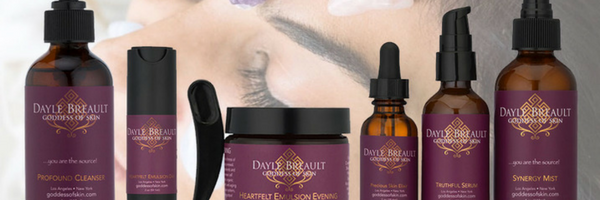Sunscreen Saviors: chemical vs. mineral
 Our skincare regimes may switch up throughout the year, based on climate changes, hormonal changes, and many other factors. But one thing remains consistent – rain or shine, sun or snow, you should always wear sunscreen. Proper sun care is one of the most effective ways to prevent skin cancer, premature aging, and sun damage. In fact, according to the Skin Cancer Foundation, it is estimated that about 90% of skin aging is caused by the sun. And since the skin is the largest organ in the human body with so many crucial functions, its up to us to protect it so that we may continue to GLOW!
Our skincare regimes may switch up throughout the year, based on climate changes, hormonal changes, and many other factors. But one thing remains consistent – rain or shine, sun or snow, you should always wear sunscreen. Proper sun care is one of the most effective ways to prevent skin cancer, premature aging, and sun damage. In fact, according to the Skin Cancer Foundation, it is estimated that about 90% of skin aging is caused by the sun. And since the skin is the largest organ in the human body with so many crucial functions, its up to us to protect it so that we may continue to GLOW!
But with so many different types of sunscreens on the market, how can you tell which is right for you, and which to avoid?
Sunscreen has come a long way since the days of the Coppertone “baby bottom” ads, and formulas are so advanced now that there’s no reason not to call it what it is – an essential step in your morning skincare regime. Let’s not let it be an afterthought.
The two main types of sunscreen available are mineral (sometimes known as physical sunblock) and synthetic (also known as chemical sunblock). They act in one of two, somewhat self-explanatory ways – by forming a mineral barrier, or by forming a chemical one. While chemical sunscreens are definitely the most common type on the market, you may want to reconsider grabbing at the first SPF you see on the shelf at your local drugstore.
Chemical sunscreens penetrate the skin, and scatter and deflect the sun’s harmful rays upon absorption. There are over 30 synthetic sun-protection chemicals that can be found in skincare products, including oxybenzone, avobenzone, octisalate, octocrylene, homosalate, and octinoxate. These tend to be found in more water-resistant formulas, which can make them more appealing as a consumer, but in reality, they need to be reapplied just as often as their mineral-based counterparts. If you’ve ever had a reaction or irritation from a sun protectant product, chances are, it was a chemical-based one. Don’t be fooled by high SPF labels. They can tempt you into staying in the sun too long, and (above SPF 50) the higher the SPF, the more often they must be reapplied.
Chemical sunscreen ingredients have been shown to cause damage to coral, accumulate in fish and the environment, and cause hormone disruptions in fish and amphibians. So imagine what they can do when absorbed into our own skin. But what about FDA certification? The Food and Drug Administration has not reviewed evidence of potential hazards of sunscreen filters – instead it grandfathered in ingredients used in the late 1970s when it began to consider sunscreen safety. Instead, the EWG has reviewed existing data about human exposure and toxicity levels in the 9 most commonly used sunscreen chemicals. After testing over 1,400 popular sunscreens on the market, only 5% met their safety standards for human use. And oxybenzone (a synthetic form of estrogen), the most prevalent ingredient in sunscreens on the market – showed worrisome results. Present in nearly 65% of non-mineral sunscreens in their 2018 market database, it was found to cause allergic skin reactions and hormone disruptions in both men and women. Because these chemicals are absorbed into the deeper layers of the skin, where capillaries and veins circulate blood, they in turn entire the body’s circulatory system. In a recent study, traces of oxybenzone were been found in 96% of the American population. Traces were also found in breast milk – indicating that developing fetus and newborns may be exposed to these substances. Interesting, considering their topical use has not been approved for infants. Mineral sunscreens are the only form of sun protectant that has been approved for use on babies. We all know that what we put into our bodies effects our skin, but the opposite is just as true as well – in most cases, what we apply to our skin externally, often finds its way into our bodies. We should always be sure that what we apply is safe.
Now as for the second type of sunscreen – mineral-based formulas, there is a lot more hope. There are two main ingredients for mineral sunscreens – titanium dioxide and zinc oxide, and they can often be found either together or separate. Mineral sunscreens are known “physical” sun blockers because of their relatively large molecular size – hence, they won’t absorb into the deeper layers of skin, but rather coat the skin and act as a mirror, reflecting light and harmful rays away from our exposed flesh.
Naturally white in color, titanium dioxide and zinc oxide are both powdered minerals. With their highly reflective particles, they are naturally “broad-spectrum,” meaning that they protect against both UVA and UVB radiation. In addition, they won’t break down in the sun and have the EWG’s seal of approval, something that’s always been important to us over here at the Goddess of Skin.
While titanium dioxide is the gentler of the two minerals and is best suited for the most sensitive skin types, zinc oxide is slightly more effective at blocking long UVA rays and in addition, is naturally antimicrobial. Both are noncomedogenic – meaning that proper application (i.e. thin layers on clean skin) won’t clog your pores or contribute to skin congestion.
Bottom Line:
Use mineral over chemical sunscreens, reapply often, and drink lots of water for healthy, happy skin all summer long! While sunscreen should never be an afterthought in your skincare regiment, it also shouldn’t be the only step you take towards protecting from the sun’s harmful rays.
⁃Studies show that proper attire (hats, shirts, shorts, etc.) can protect and reduce your burn risk by 27%.
⁃Whenever possible, try to plan outdoor activities in the early morning or late afternoon with the sun is lower in the sky and the UV index is safer.
⁃Sunglasses should always be worn! Not only are they cute, but they help prevent cataracts, protect from harmful UV rays, and prevent premature aging around the eyes by lessening subconscious need to squint.
⁃Keep skin clean! Breakouts happen when dirt, oil and bacteria get trapped inside the pore – always wash your face and body after sunscreen use and sun exposure.
⁃Avoid the tanning bed! As tempting as it may be to “build a base” or get that glow year round, tanning beds expose the skin to up to 15 times more ultraviolet radiation than the sun and contribute to rising increase in melanoma rates.
⁃And lastly, we are all unique! Love the body you’re in and embrace your own natural levels of melanin – and the healthy glow provided by simply using a good, nightly body oil. Nourished skin will love you back!
https://www.ewg.org/sunscreen/#.WxWU5dPwaYU – Guide to Sunscreens
https://www.ewg.org/sunscreen/report/the-trouble-with-sunscreen-chemicals/#.WxWWG9PwaYU – The Trouble With Sunscreen Chemicals
https://www.skincancer.org/skin-cancer-information/skin-cancer-facts – Skin Cancer Facts & Statistics


